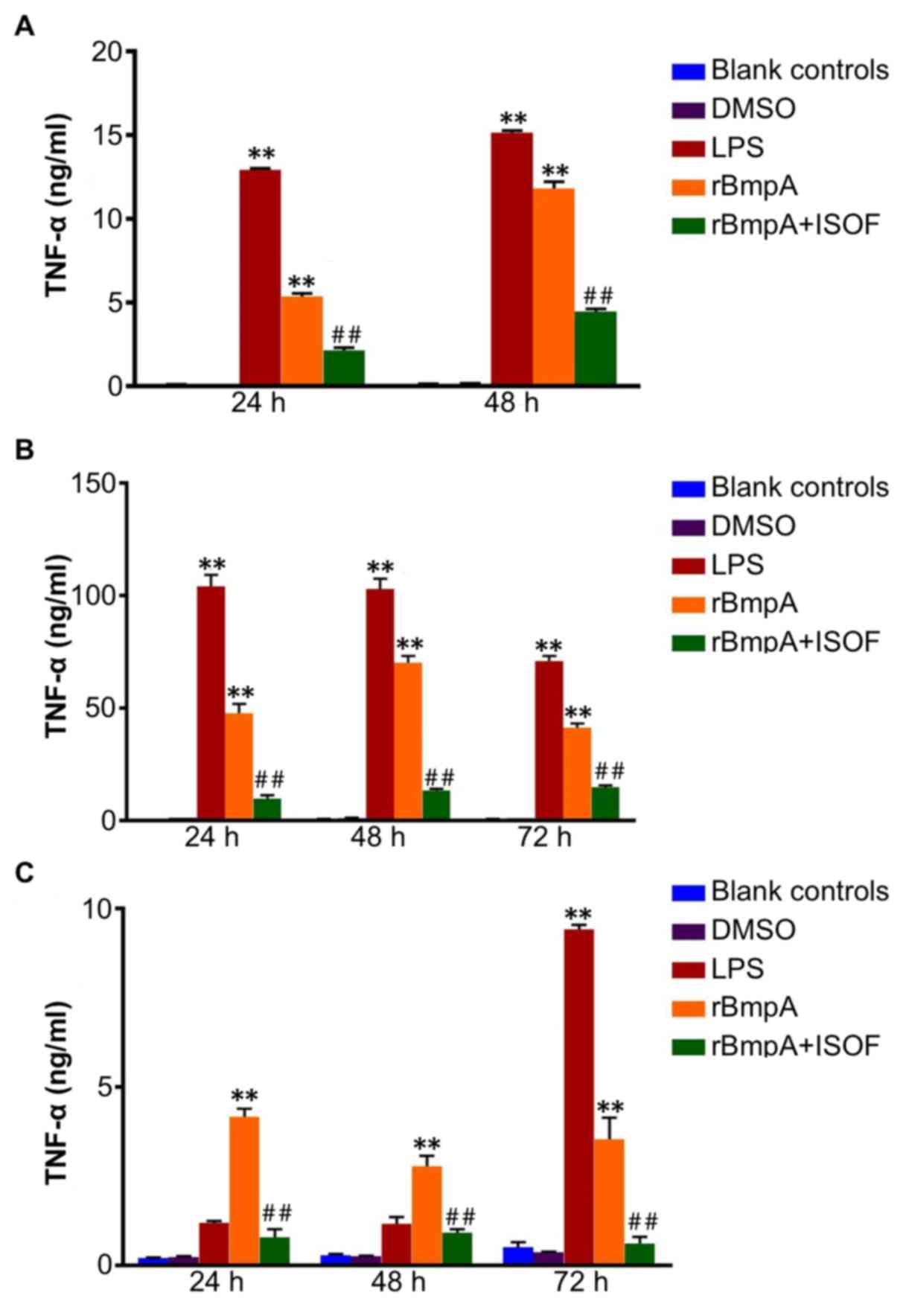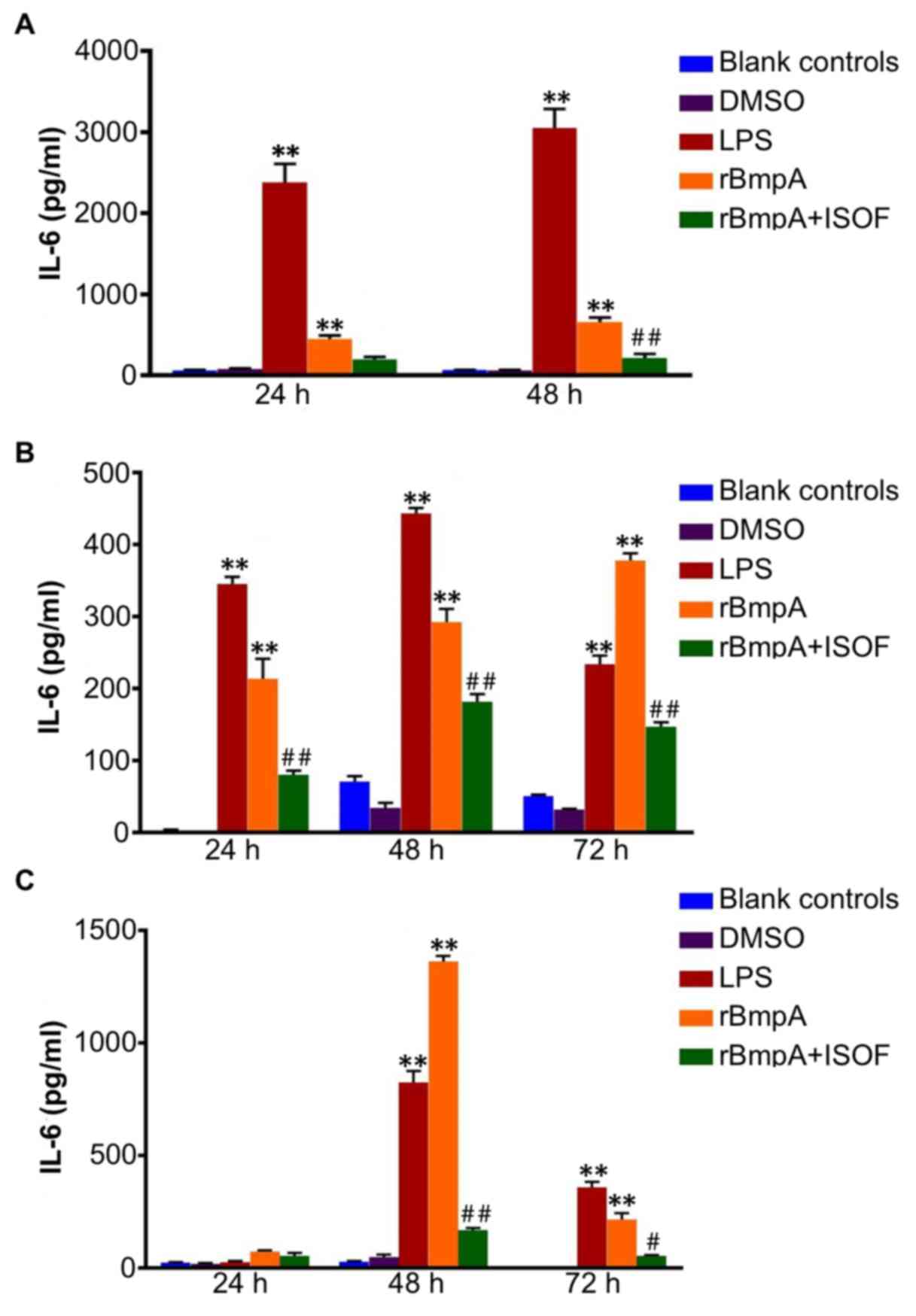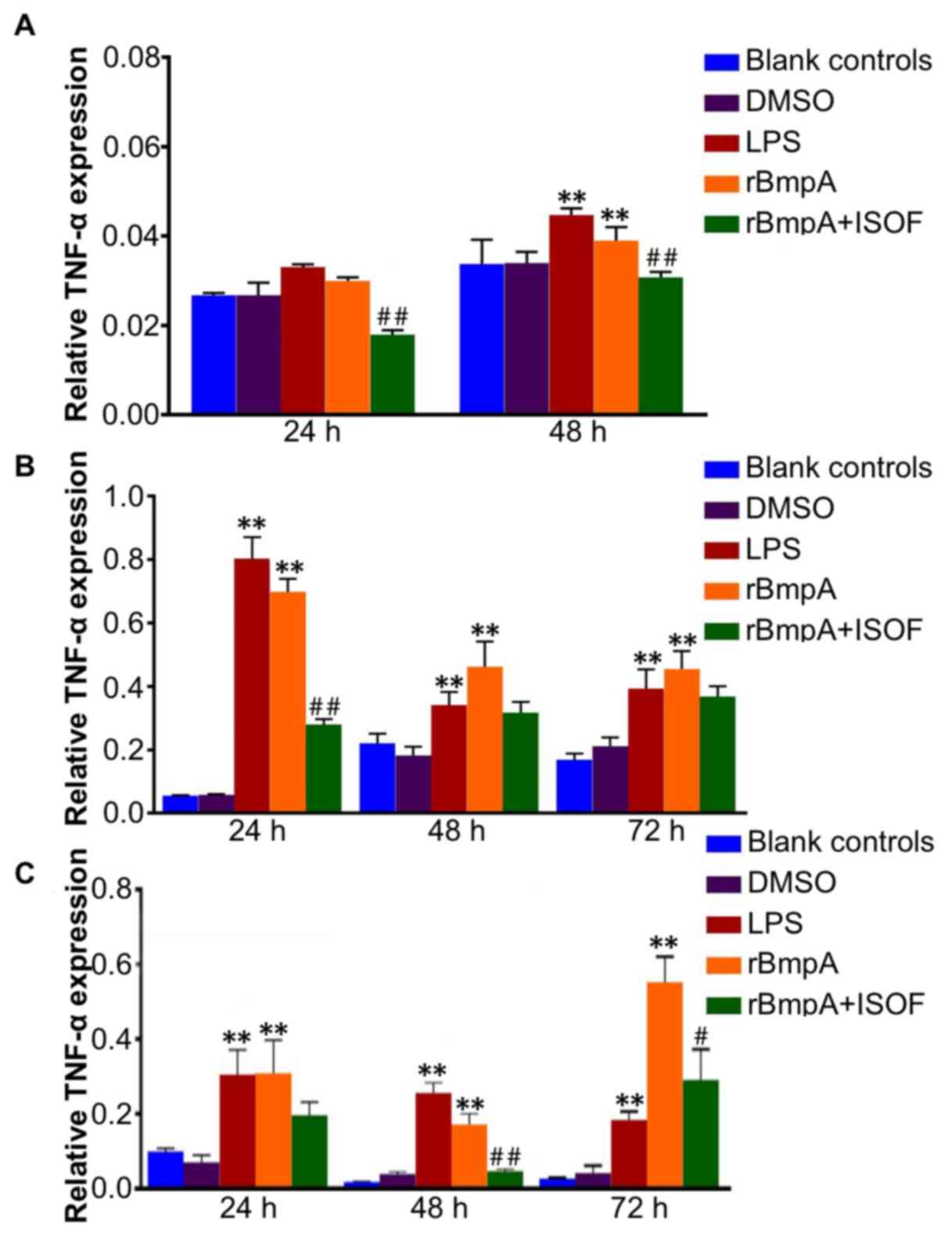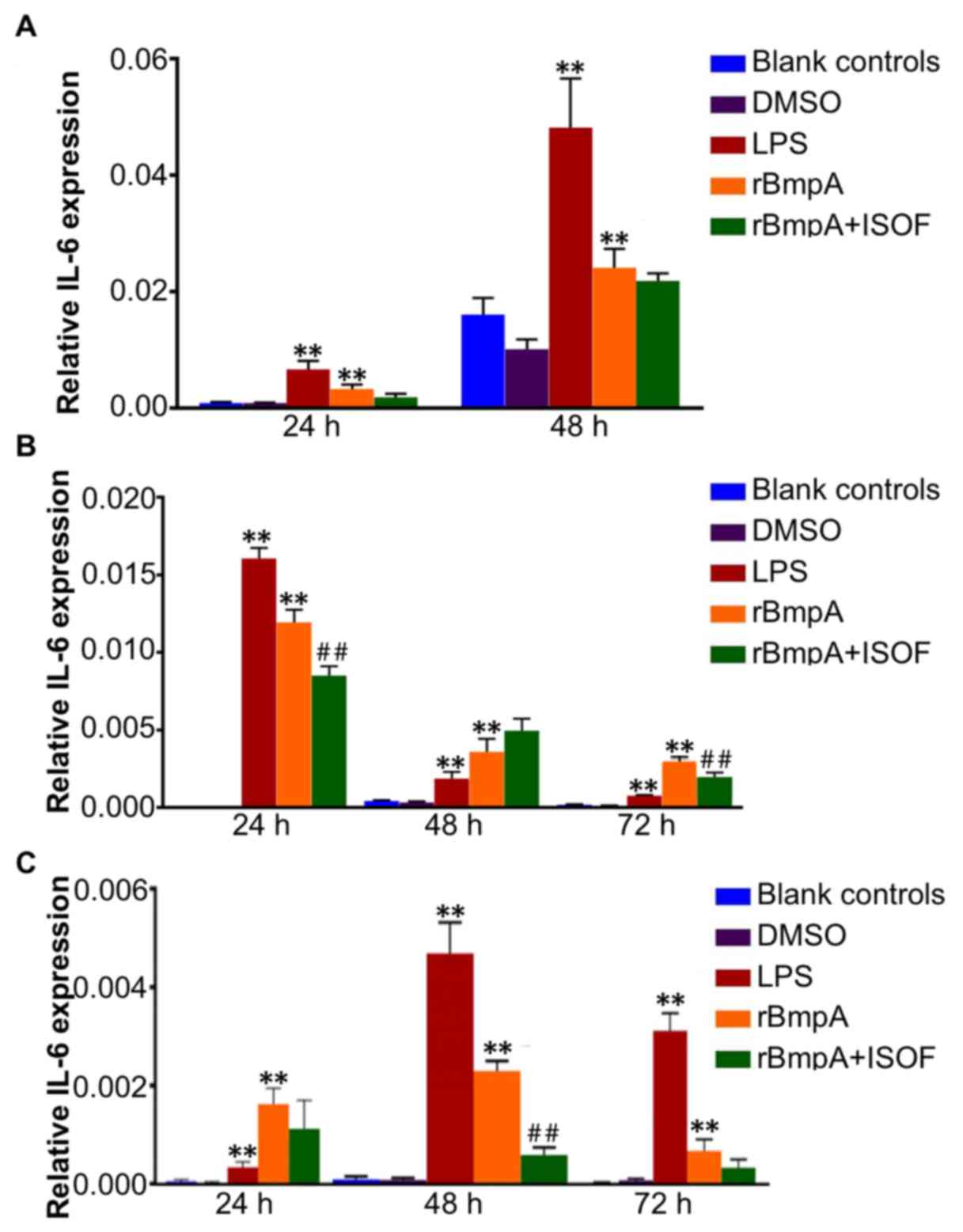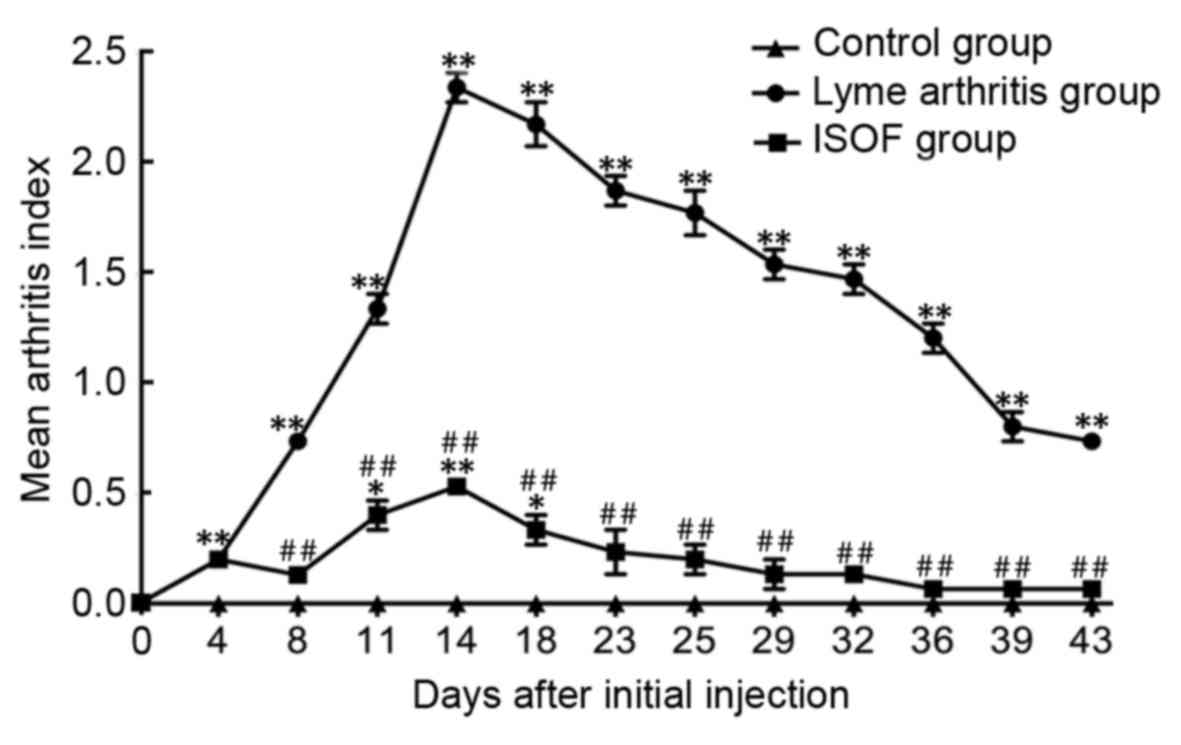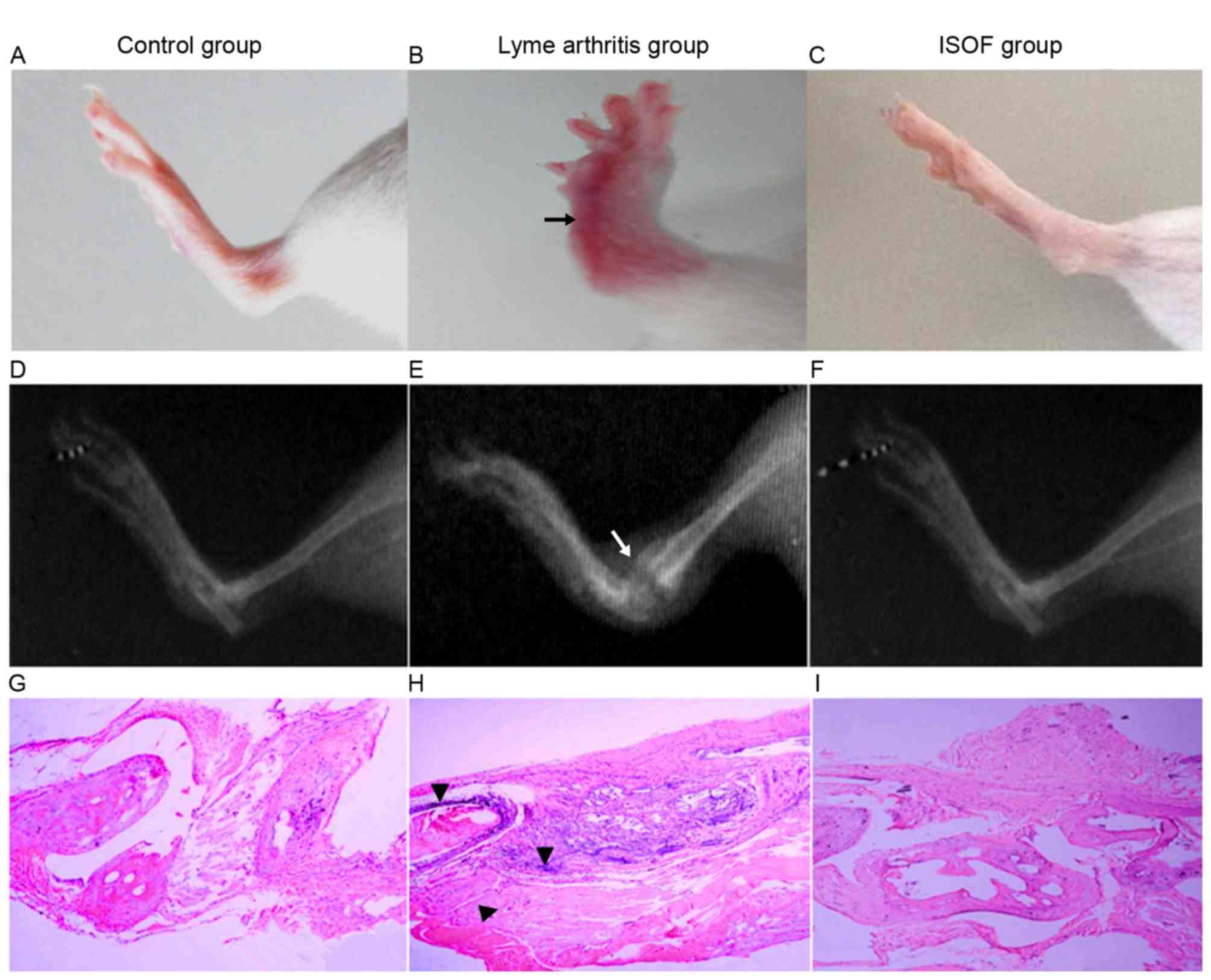|
1
|
Gerstenblith TA and Stern TA: Lyme
disease: A review of its epidemiology, evaluation, and treatment.
Psychosomatics. 55:421–429. 2014. View Article : Google Scholar : PubMed/NCBI
|
|
2
|
Stanek G, Wormser GP, Gray J and Strle F:
Lyme borreliosis. Lancet. 379:461–473. 2012. View Article : Google Scholar : PubMed/NCBI
|
|
3
|
Oosting M, Buffen K, van der Meer JW,
Netea MG and Joosten LA: Innate immunity networks during infection
with Borrelia burgdorferi. Crit Rev Microbiol. 42:233–244.
2016.PubMed/NCBI
|
|
4
|
Pal U, Wang P, Bao F, Yang X, Samanta S,
Schoen R, Wormser GP, Schwartz I and Fikrig E: Borrelia
burgdorferi basic membrane proteins A and B participate in the
genesis of Lyme arthritis. J Exp Med. 205:133–141. 2008. View Article : Google Scholar : PubMed/NCBI
|
|
5
|
Yang X, Izadi H, Coleman AS, Wang P, Ma Y,
Fikrig E, Anguita J and Pal U: Borrelia burgdorferi
lipoprotein BmpA activates proinflammatory responses in human
synovial cells through a protein way. Microbes Infect.
10:1300–1308. 2008. View Article : Google Scholar : PubMed/NCBI
|
|
6
|
Yin J, Wang Y, Tan B, Kang Y, Xie D, Tian
L and Huang J: Matrix solid-phase dispersion extraction for
chromatographic analysis of labdane diterpenoids in Coleus
forskohlii. Phytochem Anal. 24:117–123. 2013. View Article : Google Scholar : PubMed/NCBI
|
|
7
|
Tian L, Wang Y, Ling Y, Yin J, Chen J and
Huang J: A sensitive and specific HPLC-MS/MS analysis and
preliminary pharmacokinetic characterization of isoforskolin in
beagle dogs. J Chromatogr B Analyt Technol Biomed Life Sci.
879:3688–3693. 2011. View Article : Google Scholar : PubMed/NCBI
|
|
8
|
Feng S, Wang LP, Voravuthikunchai S, Liang
Z, Liu AH and Bao FK: Isoforskolin from native plant Coleus
forskohlii of Yunnan, China plays multiple biological roles.
Open J Immunol. 6:63–66. 2016. View Article : Google Scholar
|
|
9
|
Yang WM, Qiang DQ, Zhang M, Ma L, Zhang Y,
Qing C, Xu Y, Zhen C, Liu J and Chen YH: Isoforskolin pretreatment
attenuates lipopolysaccharide-induced acute lung injury in animal
models. Int Immunopharmacol. 11:683–692. 2011. View Article : Google Scholar : PubMed/NCBI
|
|
10
|
Ringseis R, Schulz N, Saal D and Eder K:
Troglitazone but not conjugated linoleic acid reduces gene
expression and activity of matrix-metalloproteinases-2 and −9 in
PMA-differentiated THP-1 macrophages. J Nutr Biochem. 19:594–603.
2008. View Article : Google Scholar : PubMed/NCBI
|
|
11
|
Berges C, Naujokat C, Tinapp S, Wieczorek
H, Höh A, Sadeghi M, Opelz G and Daniel V: A cell line model for
the differentiation of human dendritic cells. Biochem Bioph Res
Comm. 333:896–907. 2005. View Article : Google Scholar
|
|
12
|
Livak KJ and Schmittgen TD: Analysis of
relative gene expression data using real-time quantitative PCR and
the 2(-Delta Delta C(T)) method. Methods. 25:402–408. 2001.
View Article : Google Scholar : PubMed/NCBI
|
|
13
|
U.S. Department of Health And Human
Services, National Institutes of Health, Office of Laboratory
Animal Welfare: Public Health Service Policy on Humane Care and Use
of Laboratory Animals, Revised 2015, NIH Publication No.
15–8013Office of Laboratory Animal Welfare, National Institutes of
Health. U.S. Department of Health and Human Services; Bethesda, MD,
USA:
|
|
14
|
Nowalk AJ, Gilmore RD Jr and Carroll JA:
Serologic proteome analysis of Borrelia burgdorferi
membrane-associated proteins. Infect Immun. 74:3864–3873. 2006.
View Article : Google Scholar : PubMed/NCBI
|
|
15
|
Bryksin AV, Tomova A, Godfrey HP and
Cabello FC: BmpA is a surface-exposed outer membrane protein of
Borrelia burgdorferi. FEMS Microbiol Lett. 309:77–83.
2010.PubMed/NCBI
|
|
16
|
Hu L: Lyme Arthritis. Infect Dis Clin N
Am. 19:947–961. 2005. View Article : Google Scholar
|
|
17
|
Cervantes JL, Hawley KL, Benjamin SJ,
Weinerman B, Luu SM and Salazar JC: Phagosomal TLR signaling upon
Borrelia burgdorferi infection. Front Cell Infect Microbiol.
4:552014.PubMed/NCBI
|
|
18
|
Zanoni I and Granucci F: Differences in
lipopolysaccharide-induced signaling between conventional dendritic
cells and macrophages. Immunobiology. 215:709–712. 2010. View Article : Google Scholar : PubMed/NCBI
|
|
19
|
Chow JC, Young DW, Golenbock DT, Christ WJ
and Gusovsky F: Toll-like receptor-4 mediates
lipopolysaccharide-induced signal transduction. J Biol Chem.
274:10689–10692. 1999. View Article : Google Scholar : PubMed/NCBI
|



